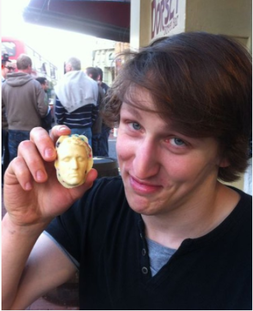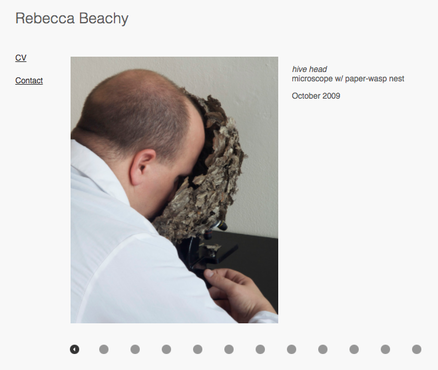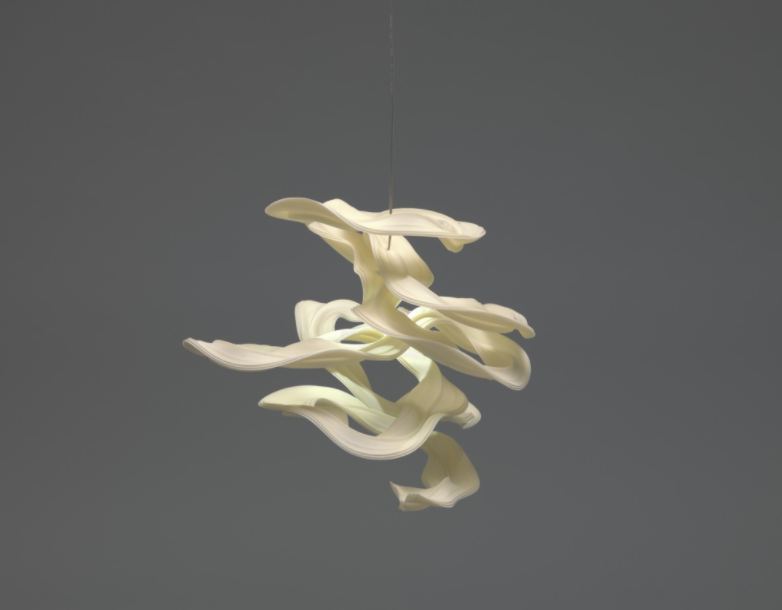|
Brittany's update After enjoying the holidays and working through the busiest time of the Semester, Cara and I had a chance to catch up this week to talk insects, installations, inclusion v. dissonance. Cara and I traded off blog writing responsibilities for two weeks rather than writing individual texts. We have been discussing what our final piece should look like, do, and ultimately how we will attempt to create something that has a broad enough signal / message for as many people as possible to understand. We spoke a lot about dissonance v. inclusion in relationship to how humans react to insects in various forms. Cara said something interesting to me that really resonated (hopefully I have this written down correctly)- “Insects are the last animal that we interact with on an involuntary basis”..I would further say that we also most frequently interact with insects on an involuntary basis. This is not the same as spending time with your domesticated dog or cat, but rather we do not typically plan our interactions with insects. These instances come when we step on them with our shoes, swat them from our faces or food, when we exterminate them from the perimeters of our homes, when a spider crawls into the corner of a room and makes a web or a flying insect comes crashing into your windshield as you zoom down the highway. Our interactions with insects are generally unwanted, unexpected, and sharing spaces with them is typically uninvited.  From: http://www.instructables.com/id/Realistic-Chocolate-Heads-from-3D-Prints/ From: http://www.instructables.com/id/Realistic-Chocolate-Heads-from-3D-Prints/ Cara and I talked about ways to push the boundaries of comfort and how to have a human beings interact with insects in a way that is not necessarily comfortable- to re-orient the way that one might interact with an insect, in a way that brings the two together in a way outside of the stepping and swatting. As I was thinking of ways that we might design something, I was telling Cara about ways that we could use vacuum formed plastic to create a place where someone would stick their face into as insects move around or towards it somehow (we have yet to determine the type of insects we will work with for our piece). Here is an example of vacuum formed plastic made from a 3D Scan, print, and ultimately vacuum formed piece of plastic (top left). I began thinking about a good friend Rebecca Beachy’s piece that was made in 2009 titled Hive Head that uses a vacated wasp nest and a microscope where viewers are forced to put their face in this space to access the information on the other side of the microscope lens (below). We have talked a lot about a one time occurrence in a piece, that insects would migrate from one area to another based on something sensorial like reaction to light etc. Where our conversation began to get very interested for me was when we discussed how to document and capture the experience of these two animals (human and insect) having this encounter and marketing it in an almost universal studio’s type way. I imagined someone sticking their face in some sort of environment where insects become (uncomfortably) close and a photograph / selfie being taken in the same way that rollercoasters snap a picture of you on the ride when you least expect it.
0 Comments
Leave a Reply. |
Visit our other residency group's blogs HERE
Brittany Ransom is an award-winning artist, technologist, and assistant professor of Sculpture and New Genres at California State University, Long Beach.
Cara Gibson is a graphic designer, director of Science Communications, and Assistant Professor at the University of Arizona in Tucson.
|






